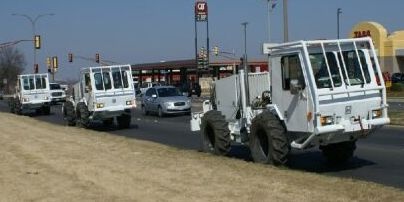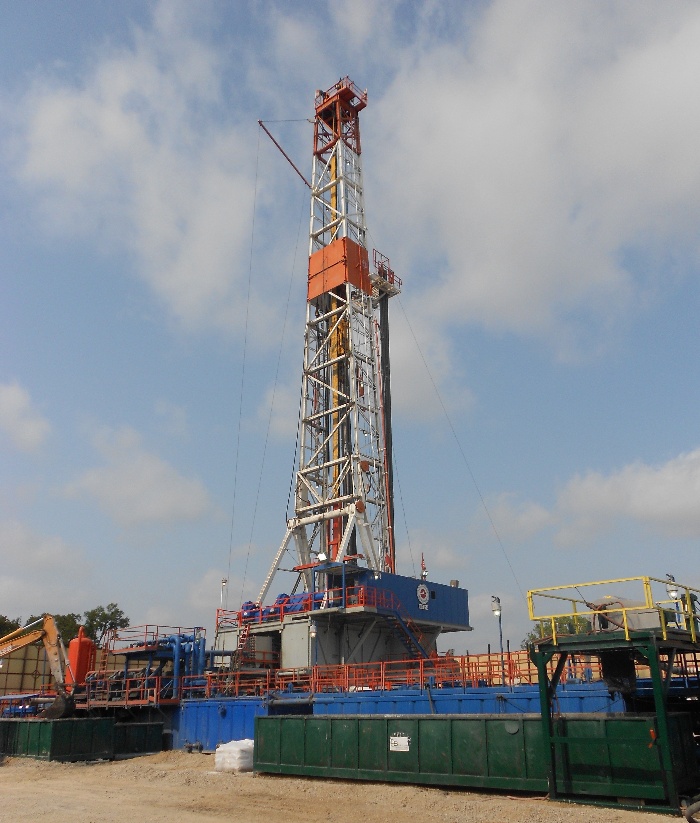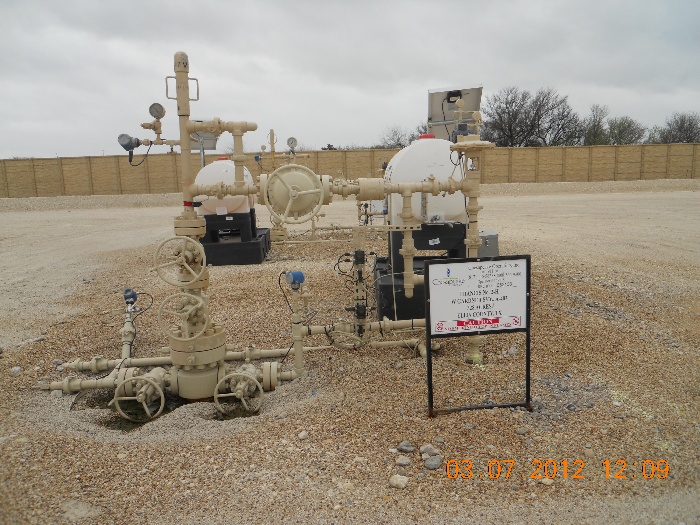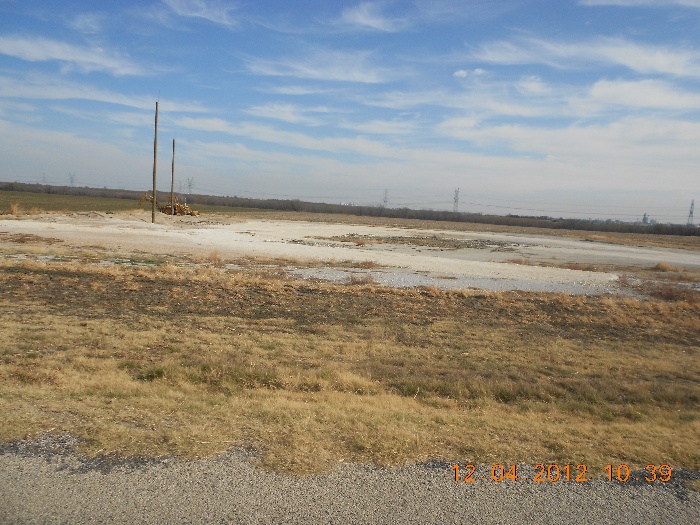About Gas Drilling
Phases of Exploring and Producing Natural Gas in the Barnett Shale
Phase 1: Seismic Phase
The Seismic Phase is the process of acquiring 3-D seismic information to evaluate the subsurface. “Thumper Trucks” are used during this process.

Phase 2: Drilling Phase
The Drilling Phase is the process of constructing the drill site area and drilling through the subsurface. Typically a well takes 20 to 45 days to drill.

Phase 3: Completion Phase
Completion Phase is the process of fracture stimulating or "fracking" the well to allow the natural gas to flow. It can take 3 to 4 days to fracture and complete the well for production.

Phase 4: Production Phase
Production Phase, the quiet, long-term phase, is the process of producing the natural gas from the well and transporting it via pipelines to market. A wellhead or “Christmas tree” is placed on top of the existing well site to control and regulate the flow of gas. This phase can last approximately 30 to 50 years.

Phase 5: Abandonment Phase
Abandonment Phase occurs once production is complete. The well is plugged, all of the equipment and debris is removed from the site, and the site is abandoned.

Gas Well Drilling & Production in Grand Prairie
On September 20, 2005, the City Council adopted the first Gas Drilling and Production Ordinance regulating gas wells within the City limits and its extraterritorial jurisdiction (ETJ). Since then, the City has adopted nine updated gas drilling and production ordinances in an effort to ensure the health and wellbeing of Grand Prairie residents.
View the current Grand Prairie Gas Drilling and Production Ordinance.
The Barnett Shale
Grand Prairie lies atop a natural gas reserve known as the Barnett Shale formation. The Barnett Shale is a natural gas rich geological formation in Texas that spans 5,000 square miles across at least 20 counties. Some experts have suggested the Barnett Shale may be the largest onshore natural gas field in the United States. The field is proven to have 2.5 trillion cubic feet of natural gas, and is widely estimated to contain as much as 40 trillion cubic feet of natural gas resources.
Although the discovery of the Barnett Shale is not new, technology now makes it possible to bring this natural resource to the surface. Historically, gas wells were drilled vertically into formations that had heavy pooling in one area. Now, gas drillers are able to drill horizontally, making 90 degree turns in a few hundred feet. Horizontal drilling allows drillers to capture gas without drilling multiple wells.
Types of Permits in Grand Prairie
Per the January 2011 Ordinance, the following gas well permit classifications are allowed in Grand Prairie:
Class 1 Gas Permit
Class 1 gas permit means a permit is required if the edge of the pad site boundary for the proposed well is to be located within seven hundred (700) feet of a residence, religious institution, public building, hospital/medical building, nursing home, school or public park, but no closer than five hundred (500) feet. A Class 1 gas permit may require City Council approval.
Class 2 Gas Permit
Class 2 gas permit means a permit is required if the edge of the pad site boundary for the proposed well is to be located greater than seven hundred (700) feet of a residence, religious institution, public building, hospital/medical building, nursing home, school or public park.
Gas Wells Permit Fees
| Fee |
|
| $10,000.00 |
Class 1 gas well permit per well |
| $7,500.00 |
Class 2 gas well permit per well |
| $1,500.00 |
Amended Permit |
| $1,000.00 |
Re-Work Fee Required per Sec. 13-504(e) |
| $1,000.00 |
Operator Transfer |
| $2,750.00 |
Annual Fee (Per well) |
Environmental Concerns with Gas Well Drilling
Gas well operations can have many environmental concerns. Among them are, water consumption, wastewater disposal, use of toxic chemicals, truck traffic, air pollution, noise from the operations, potential groundwater and well water contamination, deforestation, road-building and surface water runoff.
Horizontal drilling reduces the affects to the land surface as fewer wells need to be drilled. In addition, the City requires that applicants use a closed loop system for the spoils of drilling – an oily mud mixture – is used. A closed loop system means that all the “mud” will be stored in tanks rather than on the ground. This system dramatically reduces environmental impacts.
The Gas Well Drilling and Production Ordinance also mandates that the applicant: 1) meet noise level requirements by conducting a Noise Abatement Study prior to the drilling, 2) have secondary containment around all tanks, 3) submit quarterly air monitoring, and 4) clean up all spills immediately.
City Review and Inspections
Visit the Process and Forms page for information on the city's review and inspections process.
Drilling for Natural Gas
All gas wells are permitted by the City of Grand Prairie, Public Health and Environmental Quality Department to ensure that all local, state, and federal regulations are met by the applicant. After a well has been permitted, the site will be prepared by bulldozers and other equipment and a drill rig will be set up. During the drilling operations, expected to last from weeks to several months per well, the drilling crew and security will be on-site 24 hours a day, 7 days a week. The drill rig will be used to drill through solid rock to get to the natural gas reserves about 1.5 miles below the surface.
To improve gas production, a mixture of chemicals, sand and water is forced into the well to fracture the rock and allow natural gas to flow to the well bore. This process, called “fracturing” takes several days per well.
After the well is drilled, storage tanks, meters, pumps, and other equipment are brought onto the site and the area is cleaned up and fenced. These wells are expected to be productive from 30 to 50 years. Occasional “refracturing” may be needed to maintain the flow of gas from the well.
Once the well stops producing, the well is capped and the operator returns the site to its original condition as much as practicable.
Gas Leases & Royalties
Contact the Railroad Commission of Texas for information on leases and royalties. View Disclaimer on Leasing(PDF, 36KB) .
Gas Drilling Leasing Practices
If you would like to file a complaint regarding leasing practices, contact The Attorney General of Texas, Consumer Protection Division at 1-800-621-0508. View Disclaimer on Leasing(PDF, 36KB) .